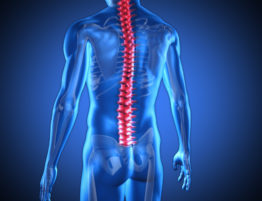What is a “commercial truck”?
A commercial truck is a vehicle used in the course of business and/or for the transport of commercial goods. Examples are 18-wheelers, tractor trailers, tanker trucks, dump trucks, delivery vehicles, semi trucks and other large freight trucks.
How are traffic accidents involving trucks different from accidents involving passenger cars?
Accidents involving trucks are typically more catastrophic than accidents involving cars due to the sheer size of a truck. A typical fully loaded large commercial truck can weigh 80,000 pounds or more, while an average passenger automobile weighs approximately 3,000 pounds. Due to this size disparity, and the basic laws of physics, any collision between a commercial truck and another vehicle is likely to result in serious, even fatal, injuries.
What are the most common causes of accidents involving commercial trucks and automobiles?
Some common causes of truck accidents include inadequate training as to driving technique, safety issues and defensive driving; driver fatigue; a truck’s characteristics and capabilities (such as limits associated with acceleration, braking and visibility); drug or alcohol use by the driver; speeding; mechanical failure; defective parts; and improper loading or overloading the truck.
I was injured in a crash where a truck driver was at fault. What kind of damages can I recover?
Your recovery in a personal injury action can include compensation for your medical expenses, hospital bills, income lost because of missed work, pain and suffering, future medical or physical therapy expenses and compensation for any loss of earning capacity resulting from the accident.
Are commercial truck drivers required to have a special drivers license?
Yes. Drivers must have a commercial drivers license (CDL) if they drive a vehicle that weighs more than 26,000 pounds; transport themselves and 15 or more passengers; or transport hazardous materials. To obtain a CDL, an individual must pass a knowledge and driving skills test taken in a truck that is similar to the type of truck that he or she will be driving.
Are there limits on the amount of time that a commercial truck driver can spend on the road?
Yes. The Federal Motor Carrier Safety Regulations, which apply to all vehicles engaged in interstate traffic, contain specific regulations governing hours of service of drivers (49 C.F.R. §395). For example, a driver is not allowed to drive more than 10 hours following 8 straight hours off duty or for any period after having been on duty 15 hours following 8 consecutive hours off duty.
If I am injured in a truck accident, who can I sue?
Generally, you will likely be able to sue the driver of the truck, the trucking company and perhaps the truck’s manufacturer. Whether you can sue the trucking company depends on whether an employment relationship is established between the truck driver and the trucking company. If such a relationship is shown, the company can be held liable for the driver’s negligence under a legal theory known as “respondeat superior.” If a truck driver is an independent contractor of the trucking company, and not an employee, it will probably not be possible to establish liability using respondeat superior. However, the trucking company may be liable for negligent hiring or supervision of the truck driver. It may be possible to sue the truck’s manufacturer if you can show that the accident was caused by some defect in the truck.
What is an “underride” accident?
An underride accident happens when a passenger car collides with a truck or the trailer of a truck or semi-trailer and runs underneath the truck. This type of collision can result in the roof of the passenger car being sliced off. If the impact occurs near one of the truck axles, it is likely that the vehicle will be prevented from going completely under the truck. There are two types of underride collisions: side underride and rear underride.
What are some unique features of trucks that contribute to the severe nature of many truck accidents?
Trucks often have large tank bodies that affect the truck’s maneuverability. Further, a tanker truck that is carrying liquid may be swayed by the sloshing of the liquid it carries. Trucks also have a longer stopping distance than passenger cars, and the brake systems of trucks and cars are completely different. Most tractor trailers have air brakes in which pressure is used to increase the braking force. Proper use of air brakes can help prevent a truck from sliding and jack-knifing. If a brake system is unbalanced, it can affect the steering, control and stopping distance.
If I am partially at fault for the accident, can I still recover compensation?
It depends on the degree of your fault. Under the legal doctrine known as “comparative negligence,” the amount of another party’s liability for the accident is determined by comparing his or her carelessness with your own. That party’s portion of liability determines the percentage of the resulting damages he or she must pay. In most states, you cannot recover anything if your own carelessness was 50% or more responsible for the accident.
Los Angeles Large Truck and Semi-Truck Accident Attorney
For a Free Consultation Call (562) 435-8300
From offices in Long Beach, our lawyers represent clients in the Los Angeles area and throughout Southern California, including those injured in accidents on the Grapevine, Cajon Pass, U.S. 101, 60 Freeway and 1-5, I-10, 1-9 I, I-405, I-110, 1-105, [-210, 1-15 and 1-215.






